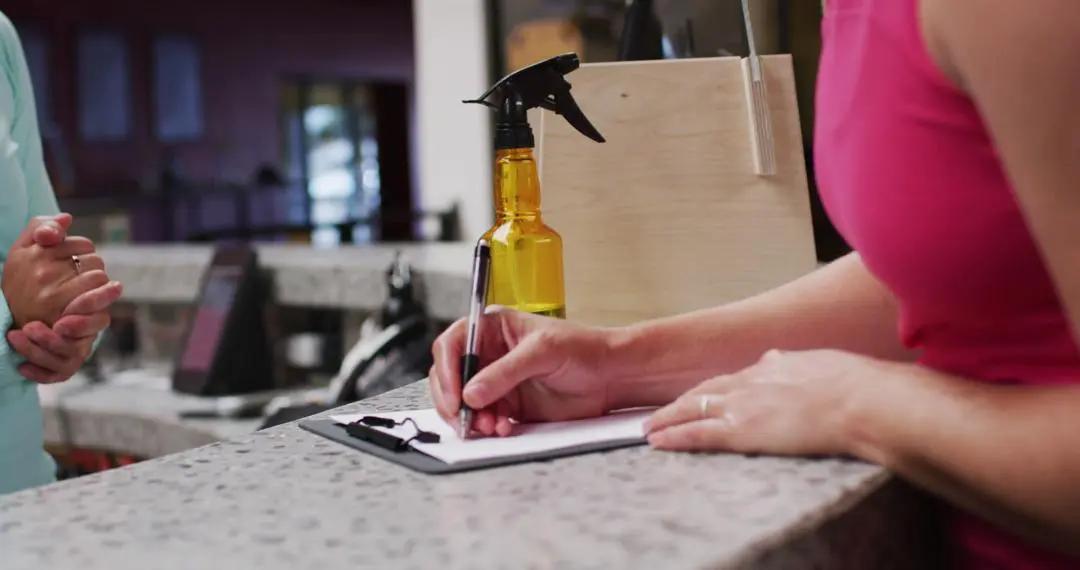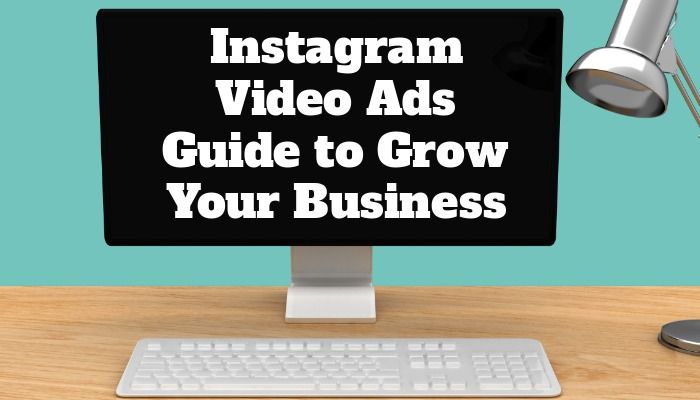Landing Pages and Lead Generation
The concept of lead generation was revolutionized by the appearance of landing pages. There is a reason they are also referred to as “lead capture pages”. They are the backbone of most digital marketing campaigns nowadays and a great way to capture more leads, generate conversions, and up your business’ chances for success.
You can take a lot of time to find your idea, as a YouTube video idea you can take your time to find the perfect one. You don't have to put yourself a kind of pressure about how many time people are waiting.
They sound great, don’t they? Well, if you are enticed by the idea of increasing your lead generation odds by creating a landing page for your next campaign, there are a few things you should know.
A landing page’s design is one of the most important aspects of its success and getting it just right is what can set you up for great results or an epic fail. So, to get you one step closer to your ROI goals, we’ve rounded up 7 of the best tips for a great landing page design.
What Is a Landing Page?
Landing pages have one main goal – to convince users to act. What that action is, depends on your marketing strategy. It can be signing up for your service or to receive emails from your brand. It can be to download a piece of lead generation content or buy your product.
Landing pages are a major part of an effective marketing strategy and a great tool to guide visitors through your sales funnel.
You may be asking yourself ‘What’s wrong with my homepage? Isn’t it enough?’. The answer is simple. Your homepage will be more crowded and offer more information than the landing page. It could end up confusing the visitor or changing their course.
The landing page, on the other hand, is dedicated to one purpose and one purpose alone. And, chances are that it will get it done because top landing pages have a conversion rate of 5.31% or higher.

Table of contents:
- ● Landing Pages and Lead Generation
- ● Types of Landing Pages
- ● Tips for a Great Landing Page Design
- ● Conclusion
Types of Landing Pages
Let’s dive deeper to see where you could add a landing page in your marketing campaign and which type of landing page is right for your business. There are several options. So, depending on your goals and specific circumstances, all you have to do is choose the one that suits you best.
Lead Capture Page
The lead capture page is used for obtaining information from potential customers and using that information to nurture a relationship with them. It contains a form asking for info like name, e-mail, telephone number. It is standard practice to offer something in return for this information – downloadable educational material, a special discount, a personalized offer. Once the users fill in this information, they are signed up to receive regular emails from your brand.
This is the landing page of Ryan Robinson, it is the first thing that you see when you go to his website. Notice how the headline is directly linked to the overall theme of the site. Meaning that if you came to this page, this has more probability to convert you and get your email.
Splash Page
The splash page basically splashes on the screen of your website visitors before they can access the homepage. It announces something important. It can be a special promotion you are running for a limited time. Or a public announcement. Or a customized ‘Hello’ before your visitors go to your actual website.
For example, Zara uses it to ask for your region and preferred language. Heineken to check the age. JC Crew offers you a discount.
Squeeze Page
Squeeze pages serve the same purpose as lead capture pages. That is to get information from users. The subtle difference between the two is that a squeeze page is often more product-focused and has a simpler design. It has less content and has a more direct call-to-action.
The main part of the squeeze page of Mailshake is what the visitors see when they land. The line between the landing page and squeeze page is very thing. It is mostly about the main goal behind it. While you can scroll down for additional information, Mailshake tells you upfront what it does and that you can sign up or book a demo.
Click-Through Landing Page
A click-through landing page is used for warming up potential leads as they move through the sales funnel. It doesn’t contain a form and it is targeted at potential customers who are not ready to buy yet. Their main purpose is to convince the user to click through, just as the name implies. It usually highlights the benefits of the offer on the next page. Something along the lines of a free trial of the product you are offering.
Conversionlab gives you a sneak peek at what you may see inside the Ebook. This page is there just for that purpose, to upsell you the freebie a bit more. You can immediately see that the content seems to be well designed, so you can expect quality. Therefore chances that you will convert are higher.
Long-Form Sales Landing Page
As its name also suggests, the long-form sales page is simply a landing page that has more content. It is more useful in cases when the product you are offering is pricey or complex. It is designed to offer users more info until they become convinced to buy the product. It also works if you need to educate the user as to what your product does, or when your product requires a higher level of commitment.
Wondering how this A/B test went? Well, the significant increase in the landing page length was one of the building stones of the redesign, it is 20x longer and increased the conversion by 30%.
Paid Advertising Landing Page
Paid advertising landing pages are used in Pay-Per-Click campaigns. They are dedicated pages where visitors land after they click on the ad you run on platforms like AdWords or Bing Ads. Let’s have a look at a quick example:
If we put Crazyegg into Google, there are three ads. Meaning that these companies are bidding on the keyword “crazyegg”. If we click the first result we see this:
A PPC lander targeted at people looking for Crazyegg. They give you a comparison listing what they have and what Crazyegg does not.
“Thank You” Landing Page
The ‘Thank you’ landing page is where visitors land after they subscribe to your company’s email list or newsletter after they download an incentive you offered, or after they make a purchase.
Tips for a Great Landing Page Design
As efficient and as appreciated by marketers as they are, landing pages can still be a tricky business. The conversion rates they generate can vary or dramatically change depending on the design you use and the optimization tactics you implement. So, don’t be afraid to experiment and get creative with your marketing strategies.
To set you up for success, here are our top 10 tips for nailing a great landing page design.
1. Simplicity Is Key
Whichever way you choose to design your landing page, keeping it clutter-free and simple is paramount. Remember, the landing page is a simplified page focusing on one purpose.
Your design needs to reflect this and not bombard the user with confusing or irrelevant information or too many options. Just like in the case of opt-in forms, whitespace is your friend. Embrace it.
Simplicity also applies to your landing page copy. In the example below, PayPal does a great job using a simple design, simple wording, and a clear message. They start by emphasizing the service’s benefits. Then, they make it evident to users that to use the service, all they need to do is click the CTA button. This will lead them to a page where they will need to sign up by filling in their email and choosing a password. Talk about getting to the point!
But, we may say that Paypal is a global name with not many alternatives that would be widespread. Let’s have a look at other services that have more substitutes:
You can the same simplistic and minimalistic theme repeat itself also on the page of Asana. Your page must have a goal, so all the work is done to make sure the attention of the visitor is drawn to that goal.
It is easy to say something in 50 words. Try saying it in 5. That is what you should be striving for. There is no need for additional examples to support this point. If you go to any website of a bigger, successful company – the simplistic theme will repeat itself.
2. Make It Easy To Navigate
While you will not need any kind of elaborate navigation schemes if you have just a short lander with one opt-in form if you have a longer content page which you need to convert – navigation is a must.
You can decrease bounce rates significantly just by adding Table Of Contest. Let’s have a look at this webinar software post:
Right after the visitor landed on-page, they are greeted with a brief introduction, and when scrolling just a bit lower they immediately see a Table Of Contents that will take them to the section they are interested in just this small addition decreased bounce rate by 15% on this page.
Another great example of Table of Content use can be seen in this post about affiliate websites examples (where you can also find interesting converting designs):
Put the ToC into the sidebar and make sure it scrolls with the visitors, so they do not have to go back to the beginning to clicks a section fo the ToC again.
This can be done by a simple plugin and will do wonders for “time on the site” and “bounce rate”.
3. Invest in Good Design
Good design is all about keeping things simple, organized, appealing, and optimized. The principles of visual hierarchy will get you far in choosing the right layout, fonts, and colors for your landing page. Keep in mind that the main goal of the page is to appeal to the user and not confuse them with too many options or visual elements.
To achieve this, you will need to ditch anything that you don’t need and that doesn’t serve the purpose of the landing page. For example, you won’t be needing the main navigation bar if your landing page’s goal is to get a visitor to convert by subscribing to your email list.
As we discussed in the part one, there are many types of landing pages that serve various goals. Let’s take a look at a landing page of a giveaway app. I chose this one to dissect as while it looks different from your usual landing page (which is great as it looks fresh to the visitors’ eye) it gets all the required points across.
- When you land on their page, this is the first thing you see. They specialize in giveaways and immediately there is a simple headline “Create giveaway and engage your audience”, notice that there is only 1 form and a bit of social proof in form of reviews. This form will personalize the headline and get you started on a short sales funnel.
- You also see what the product is about. In case you are not an experienced digital marketer, on the right side, Vyper prepared some of the main features to get you to let you know their product a bit better.
- This point is also visible when you land. Notice that this testimonial has a name, position, company, and a picture. Very personalized and Nathan is talking about outstanding results. 2+3 are there to push your attention to the form.
- When you scroll down a bit, Vyper lays out authoritative names that featured their product. They are building brand trust within you. You see that Inc. and Entrepreneur featured them, that must stand for something.
- If you scroll further down, Vyper is showcasing its new product and offering a free demo. That is a second lead catcher. In case you did not go with the first form, in the beginning, now they have a chance to make sure you register for the demo.
- In this lower section of the lander, Vyper again sells itself by showing you all the features that its platform has. After that their statements are supported with various case studies.
As you can see the whole page is structured to emphasize two parts. The first form that leads you to create your free testing campaign and the second CTA that will provide you with a demo. Testing software can be used to experiment with designs and see what works best for your customers.
If we would summarize it, the flow of the content would look like this:
- Lead catcher
- Social Proof
- Second Lead Catcher
- Second Social Proof
Let’s have a more detailed look at some of the aspects of what makes a successful landing page and what many pages fail to do wrong.
4. Cut the forms
Remove any form fields asking for information you don’t really need. If your marketing strategy only needs the visitor’s name and email, don’t ask for things like phone numbers or titles.

Each additional form field will look like extra work for your visitor and this may make them walk away from the landing page. Conversion rates are highest for landing pages containing fewer form fields.
5. Write short and catchy headlines
Simplicity will be the main theme also here. There are many ways to approach the writing of a great headline, but simplicity strikes again in this example of a bulk email software service:
Go straight to the point. Notice how the link, title, and subtitle are all in alignment. No fluff to it, you came to get a bulk email software, and here it is for free. Take also notice how they double sell their offer. First Sendinblue says that you will get 9000 emails per month, which is already a big number, but to make it look even bigger they say 300 emails per day.
There is an alternative route to the direct approach. Let’s have a look at an example below is from EF Ultimate Break, which is a travel agency, not a fresh-air-in-a-jar company.
Here the headline is short, catchy, and also…a joke. It makes you wonder for a second what it is all about. The main idea is to get your attention with a headline that you have to think about for a bit. They can not offer you anything free, and the goal is not to get your email but actually to make you go to Ireland (there is also a cool video if you want to dig deeper into their idea).
6. Humanize the Copy and Be Consistent
To further your goal of not confusing the visitor, your landing page copy needs to be in line with the call to action that led them there. You don’t need to necessarily use the same words, but do maintain the same idea. For instance, if you used ‘free’ in your call to action, use it in the landing page headline or integrate it in the rest of the copy.
Next, make sure that you use simple and human language. No one likes fluffed-up or complicated terminology. Use what they call ‘the voice of the customer’ to make your copy more appealing. Talk to your visitors as if they were your friend and see things from their perspective. Use your copy to highlight the product or service’s benefits and simplify the language to better get your message across.
Add powerful words like ‘Now’ and avoid using outdated call-to-action buttons like ‘Submit’. Get a little creative with your copy and go for something more personalized and approachable.
7. Add Images
Good design will also have to include outstanding visuals. A great image can boost your landing page’s chances for success because it helps you appeal to the visitor’s emotions.
Choosing the right image is the whole other category of post, but there is one main aspect that you should keep in mind. Let’s play a game – find a common denominator:
The common denominator is a hero shot. The hero shot is a visualization of yourself using the product or service. It does not always have to be a person (but usually it). For example, Apple’s “hero shot” is its products – because that is the hero of Apple’s campaigns.
The goal of the “hero shot” is to create a feeling of what you would be like if you would be using the product or service that the company provides. The hero shot is also the main image of the page, and its choice is crucial.
Add Share Buttons
This tip is self-explanatory. You shouldn’t waste any chances for a new share or a new-like. It will improve your page’s SEO ranking and increase your chances of gaining more popularity. Add links to the social media platforms you use to interact with your customers. And don’t forget a share by email button. It’s a great example of a little that can go a long way.
Build Trust
To decrease the chances of someone getting turned off by having to share their private information, add some elements that can increase their trust in your brand.
You can add testimonials from other customers. This way, they can see other people have appreciated the lead generation content you shared in exchange for their email and that they got real value from it. You can also display logos of partner brands or current and former clients. If you are active in an industry where certifications or awards are the standards, don’t forget to include them on the landing page. They will help solidify visitors’ trust.
Don’t Skip on A/B Testing
While you are focusing on how to design your landing page, what colors to choose, what images, and what copy, it’s a good idea to not forget that no final version needs to be set in stone.
A/B testing is comparing how well two versions of a landing page do conversion-wise. You use each of them for a determined period of time, and then analyze the results to see which page was more effective. You can change the position of the form, make it appear smaller, make the headline shorter, add some more text to explain your product’s features better. No change is too small or too big. It’s all about their results.
The most efficient way to increase your conversion rates is to test different versions of your landing page until you hit the right one. And even then, you shouldn’t stop. Trends are constantly changing in the digital marketing world. Customers often get bored with the same thing and react well to fresh perspectives.
Not so long ago, testing a page with a really huge endeavor, that required significant knowledge and time resources to pull off properly. Now, with the use of a landing page builder, you can create several versions and switch between them very quickly.
The infographic below explains what elements of your landing page you can work to improve on and the directions you should consider when you decide on the variations you want to use on your A/B landing pages.
Conclusion
In this post, our goal was to provide you with the list of the most common areas where you should look for improvement.
There will always be as many points of view as there are landing pages. Many people will claim that their design is the next great thing since the sliced bread. It might be true and might not be true. Only the fulfillment of the page goal will show.
Having that said there is a repeating theme that you will see repeatedly as it seems to work. Simple, minimalistic, and straight to the point landing page convert.
Test, fail, experiment more, succeed, and with each round move closer to a higher conversion rate.

Vlad
Vlad is a founder and blogger, he writes about internet business, online course platforms, and other digital tools. Often uses Youtube Outro Maker instrument by Design Wizard.


